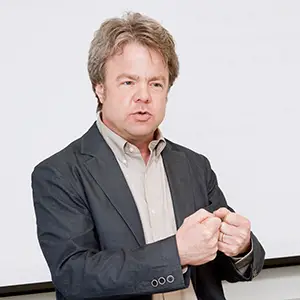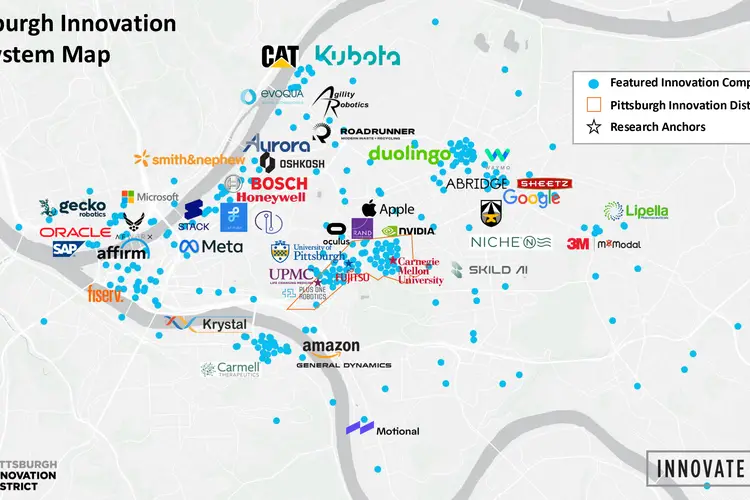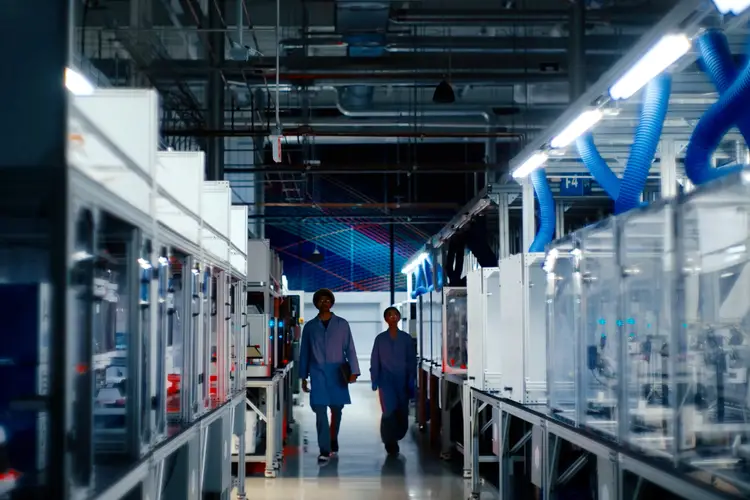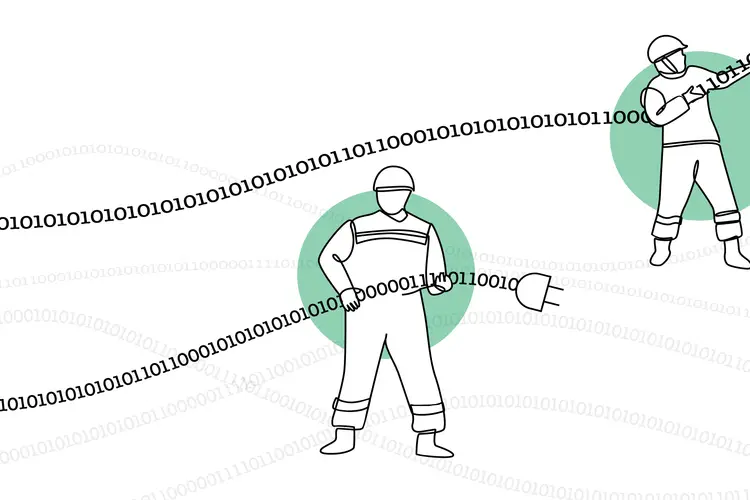
CMU Experts at the Intersection of Energy and Innovation
Media Inquiries
Carnegie Mellon University experts are developing practical solutions for a fast-changing energy system. Their work modernizes infrastructure, accelerates innovation and harnesses AI for a more efficient and resilient future at a moment when the stakes for national competitiveness and public well-being have never been higher.
Here's what they have to say about this pivotal moment.
Upgrading our energy infrastructure for AI
The AI-driven energy expansion is a once-in-a-generation opportunity to replace vulnerable, outdated infrastructure with inherently more secure, digitally-native systems. Technologies like advanced nuclear reactors, utility-scale batteries and inverter-based resources weren’t retrofitted for the digital age — they were built for it. That means they can deliver the abundant power AI requires while offering the adaptability and resilience our national security demands.
— Harry Krejsa(opens in new window)
Director of Studies, Washington Office
Carnegie Mellon Institute for Strategy & Technology
Turbocharging clean energy innovation
Pittsburgh brings the past, present and future together in exciting ways, especially at the intersecting frontiers of AI and energy. Our energy and manufacturing capabilities, brought together with our deep strengths in AI and computing at our universities and in our emerging entrepreneurial ecosystems, turbocharge the region's ability to lead in clean energy innovation, to the benefit of our workers, communities and the nation. CMU’s Scott Institute for Energy Innovation(opens in new window) and Engineering and Public Policy Department(opens in new window) are proudly engaged in campus and community-wide collaboration to realize this ambitious vision.
— Valerie Karplus(opens in new window)
Professor, Engineering and Public Policy
Courtesy Appointment, Heinz College
Associate Director, Scott Institute for Energy Innovation
Financing renewable energy assets
Rapid AI-driven electricity demand is reshaping the power sector. Financing new generation will be challenging in a world of uncertain demand forecasts, with safeguards needed to avoid passing the costs of overbuilding onto consumers. At the same time, the grid is shifting from centralized plants and long-distance transmission to a decentralized model, with power increasingly co-located with major users like data centers and factories. This system will rely on a mix of technologies — from renewables and storage to gas, nuclear and geothermal — deployed based on how quickly they can meet rising demand. While this brings opportunities for resilience and sustainability, it demands updated regulations to accommodate new players and business models.
— Chris Telmer(opens in new window)
Associate Professor, Tepper School of Business
Taking energy innovations from lab to market
Breakthrough energy innovations often stall in university labs or early prototypes. If we want to lead in the global energy race, we must bridge the gap between invention and deployment and build the advanced energy systems this century demands. This is a defining moment for America’s energy future, and our ability to modernize the grid and secure critical infrastructure depends on deploying AI and robotics at speed and scale. These technologies are essential not only for improving efficiency and resilience but for reducing dependencies on foreign suppliers of vital components like transformers and grid sensors.
— Jean-Francois Legault(opens in new window)
Associate Director, National Robotics Engineering Center
A national security imperative
America’s economic and military(opens in new window) power depends on reliable access to critical materials for energy storage, yet today the U.S. is highly reliant on high-risk locations, including military adversaries(opens in new window), for the extraction, refining, processing and manufacturing of these materials, posing significant risks to U.S. jobs and economic security(opens in new window). Meeting the government's call to action(opens in new window), analyses by CMU's Critical Technology Initiative(opens in new window) shows that with the right reindustrialization policies, U.S. production costs can be competitive with China(opens in new window), and create good jobs for high-school educated workers(opens in new window). Our analyses chart a path forward for how domestic lithium extraction, materials recovery, strategic allied trade partnerships, workforce training, and investment in innovations in novel battery chemistries and extraction techniques can each be important components of an American reindustrialization strategy.
— Erica R.H. Fuchs(opens in new window)
Director, Critical Technology Initiative
Kavčić-Moura Professor, Engineering and Public Policy
Nuclear fusion progress accelerated by AI
This moment in energy history is unique because AI will play a central role in accelerating the development, optimization and operation of our energy sources. Generative AI models now usefully represent and exploit the domain knowledge for these tasks while reinforcement learning and other discovery and control learning algorithms can now solve real-world problems much faster than the old human-only method of making technological progress. This will lead to a dramatic increase in both the total amount of energy produced, and the types and complexity of energy sources and distribution networks.
A great example of this is power from nuclear fusion. Progress toward this goal has been slow but steady for many decades. In my lab, we are using AI to develop better plasma controllers that can reach the higher temperatures and pressures needed for a financially viable fusion power plant. A process of discovery and improvement that would have taken decades using old methods, can now be done in years or even months using AI.
— Jeff Schneider(opens in new window)
Research Professor
The Robotics Institute
School of Computer Science
Empowering engineers to build better systems
Buildings are the biggest energy users in the U.S., and AI offers a transformative way to make them more efficient. In my work, we are continuously monitoring complex HVAC systems and pairing AI with digital twins so we can detect faults, reduce waste and empower engineers to focus on higher-level problem-solving. AI won’t replace human expertise — it will serve as a smart apprentice, helping us make better, faster decisions, build better systems and operate them more efficiently.
— Burcu Akinci(opens in new window)
Department Head and Hamerschlag University Professor
Civil and Environmental Engineering
Storm-ready grids need smarter, integrated planning
As extreme weather grows more unpredictable, we can no longer treat long-term infrastructure upgrades and short-term emergency responses as separate challenges. They’re deeply connected — where and how we invest in stronger infrastructure today will shape how effectively we can respond to outages tomorrow. That’s why we’re developing a sophisticated planning framework that coordinates long-term investments, like hardening power lines, with short-term emergency actions, like dispatching repair crews. Smarter, integrated planning will help make our power grids faster to recover and more resilient when the next storm hits.
— Shixiang Zhu(opens in new window)
Assistant Professor of Data Analytics
Heinz College of Information Systems and Public Policy
CMU thrives at the busy intersection of AI, innovation and energy, and our world-class researchers are tackling some of society's toughest challenges today while also pioneering new solutions for tomorrow.










